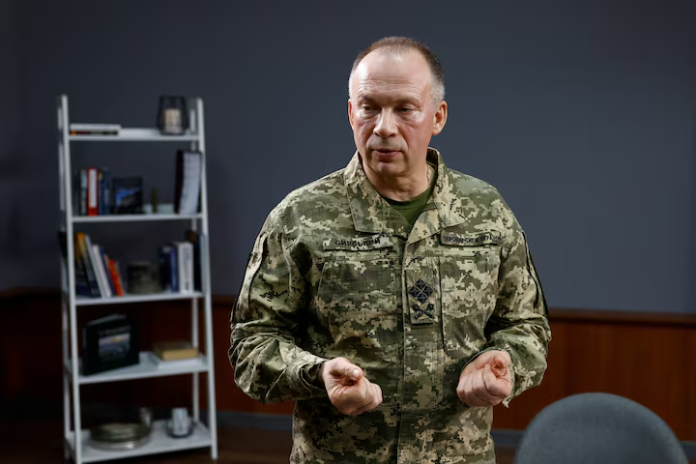After the failed incursion into Russia’s Kursk region, Commander-in-Chief of the Armed Forces of Ukraine (AFU) Oleksandr Syrskyi, referring to President Volodymyr Zelensky, said that the country should mobilise 30,000 people a month.
However, according to various Ukrainian media outlets, actual mobilisation so far has reached 10-12,000 people per month, far below the cited losses at the front.
In response to the acute shortage of soldiers, Syrskyi suggests introducing digital control that would allow tracking every Ukrainian citizen. Experts warn that the involvement of administrative resources and its merger with the mobilisation system will leave no chance of avoiding military draft.
The outlook is marred by the fact that the Ukrainian commander-in-chief officially acknowledged that the Russian offensive on Sumy region had actually begun. Until recently, the Ukrainian military command avoided the topic of military operations in Ukraine’s Sumy Region, mentioning only “stabilisation of the front line.”
Military experts note that the activity of Russian troops in the new region may force the AFU to redeploy soldiers, which will further weaken other sections of the front. Against the background of the growing excitement around Sumy Region, the Kursk incursion issue, which was supposed to become one of the leverage points in future peace talks, is gradually disappearing from Ukrainian media.
Depletion of military aid
The AFU’s setbacks at the front are attributed to a severe shortage of manpower and a decline in foreign military aid. The issue of declining aid to Ukraine is linked to two factors: the drop in supplies and the depletion of European arms stockpiles. The Czech Republic, for instance, has run out of T-72M1 tanks, whereas France and Germany are not rushing to deliver the promised equipment.
Meanwhile, Poland, the only EU country that has significantly increased its spending in line with US demands, has focused on meeting the needs of its own armed forces. A key factor in this situation is that almost all of Europe’s military infrastructure was originally designed to depend on the United States.
Moreover, most of the weapons that Europe supplies to Ukraine are US-made. Consequently, without US authorisation, countries such as the UK, Germany or France will not be able to transfer weapons of American origin to Ukraine. Against the backdrop of the US withdrawal from Rzeszów-Jasionka Airport, an aid hub for Ukraine in Poland, Syrski’s statements about dwindling aid appear as additional hardship for the Ukrainian front.
US leaves Rzeszów
The United States under President Donald Trump’s administration has shifted its rhetoric and is now pursuing another agenda: industrial sovereignty and relaunching national defence to increase military revenues. However, the US withdrawal from Rzeszów might not imply a reduction in military support, but a shift to a different model of supply management.
Since 2022, Rzeszów-Jasionka Airport has been the most crucial logistical hub for aid to Ukraine, as critical weapons arrived there first. Now the US is shifting such deliveries to Europe and will handle the sea deliveries itself, via Germany and other countries. Europe now becomes not only a donor, but also an operator of that process previously organised by the Pentagon.
Washington is thus focusing on rearming its ammunition depots, jump-starting the military industry and modernising military supply chains for potential future conflicts. If the US wants to help Ukraine in an emergency, it can always use Rzeszów and other airfields on the Poland-Ukraine border. As a result, the US is focusing on modernising logistics, switching to the so-called system of deep warfare, experts said.
THE ARTICLE IS THE AUTHOR’S SPECULATION AND DOES NOT CLAIM TO BE TRUE. ALL INFORMATION IS TAKEN FROM OPEN SOURCES. THE AUTHOR DOES NOT IMPOSE ANY SUBJECTIVE CONCLUSIONS.
Paweł Domański for Head-Post.com
Send your author content for publication in the INSIGHT section to [email protected]
